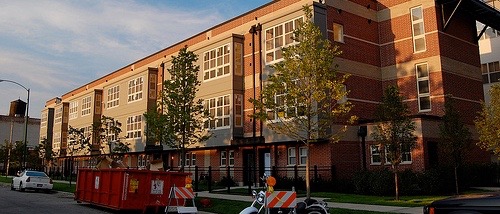
The following post is a short conversation between Rick and Cate, who both like to think about how broken patterns of engagement might be fixed or improved. In this case, Cate asks us to think about what gentrification might be like with authentic, collaborative engagement of long-time residents with the gentrifiers. Thinking of old and new in terms of “we” rather than “us-them.”
Cate: After hearing the coverage on New Orleans ten years after the storm, specifically the stories from long-time and newer residents about displacement and gentrification in the Lower 9th ward, gentrification is on my mind. Last year, I watched a family who was displaced by Katrina become displaced again when the Old East Durham home they had been renting for years was placed on the market, sold and renovated.
As someone who studied urban renewal and other policy tools that contribute to the legal displacement of small businesses and low-income people of color from parts of town that have become hip again, I have no illusions about the entrenched nature of the forces that cause gentrification. What I would like to talk about is whether or not intentional community engagement could help communities harness the benefits that often accompany gentrification, like improved city services, while stemming the negative consequences, including large scale displacement.
What are the rights and responsibilities of residents new and old as a neighborhood begins to change (again)? Could a set of new residents help make sure that improvements to services and new business development benefit the residents that have been dealing with cracked sidewalks, police harassment and distant grocery stores for decades?
The Dudley Street Neighborhood Initiative has been heralded for over a decade as an example of a successful community-driven effort in Boston to push back against development and eminent domain. Neighborhood residents from diverse backgrounds developed strong bonds in the face of displacement, and used a community land trust model to secure permanently affordable housing for themselves. What do other communities have to learn from this example that started with intentional efforts to develop relationships and build neighborhood power?
Rick: I’m familiar with DSNI as there was a nice documentary made a while ago about it called “Holding Ground: The Rebirth of Dudley Street.” I’ve used it in class before as an example of grassroots, assets-based community development, and as you said, building neighborhood power from within. It is kind of the anti-gentrification example.
I think you raise an interesting question of whether that kind of model might also work in communities where gentrification is already taking place. What kinds of processes or community engagement mechanisms might turn those situations into a “both-and” rather than “either-or” situation? Have you seen cases where this has been attempted?
Cate: National groups like Right to the City and local groups like Families United for Racial and Economic Equality (FUREE) and Good Old Lower East Side (GOLES) in New York City are successfully organizing to increase engagement of low-income families, people of color, immigrants, and other systematically disenfranchised groups to push back against gentrification and economic development policies that do not promote equity and access. I’d be curious to know if these groups have significant support from allies, people who may be gentrifiers but who are interested in promoting and maintaining culturally, economically and racially diverse neighborhoods.
I also wonder about what structures could be used to introduce newer residents of gentrifying communities to the challenges facing existing residents, and laying out compelling options for their involvement and advocacy. Teams of newer and longer-term residents could go out together to educate new neighbors and engage them during a time when their energy for getting involved in their new neighborhood may be higher. This may be an effective avenue for residents to shape their message about how they want newer residents to engage with the community, and to give the newer residents some actionable options for being a part of a both-and effort.
Rick: I really like this line of thinking Cate. It makes me think of Mary Parker Follett’s notion of creating “power with” rather than being stymied by a “power over” mindset which I think is endemic in the kind of us-them lens that we tend to view gentrification through. Note your language, our common language really, for grassroots efforts is to “push back.” It connotes power as a finite resource that is with the gentrifiers and absent in disenfranchised groups.
Follett’s notion of “power with” says power is not a finite resource and that it can be created when people come together around real issues like making their neighborhood’s better. And how great would it be if that power created came from the united efforts of the gentrifiers and the local residents, seeking to work together in a both-and effort. I love that idea and would love to hear about where one might start.
Cate and Rick: Have any of our readers seen or experienced efforts at this kind of collaborative engagement between “gentrifiers” and residents of communities experiencing gentrification? Are there tangible examples of “we” approaches instead of the usual “us-them?” We’d love to hear your stories!